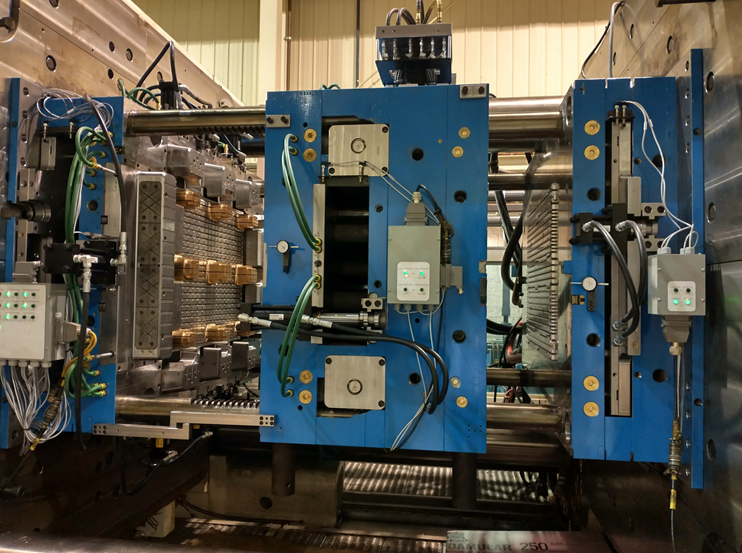Creating Massive Plastic Pyramids with Large Molds
Plastic pollution has become a global crisis, with millions of tons of plastic waste ending up in our oceans and landfills each year. Scientists and environmentalists are constantly looking for innovative solutions to tackle this problem and find sustainable ways to manage plastic waste. One such solution is the creation of massive plastic pyramids using large molds.
The idea behind creating plastic pyramids is to find a way to recycle and repurpose plastic waste into useful and sustainable structures. By using large molds, it is possible to create pyramids of various sizes, which can be used for a variety of purposes, such as building materials, art installations, or even as shelters in disaster-prone areas.
The process of creating these plastic pyramids begins with collecting and sorting plastic waste. Different types of plastic are separated and cleaned to ensure that only suitable materials are used in the production process. Once the plastic waste has been sorted, it is then shredded into small pieces and melted down.
The melted plastic is then poured into large molds specifically designed for creating pyramids. These molds can be made from various materials, such as metal or durable plastic, and come in different sizes to accommodate the desired dimensions of the pyramids. The molten plastic is carefully poured into the molds, taking care to distribute it evenly to ensure a solid and stable structure.
After the plastic has cooled and solidified, the molds are removed, revealing the newly formed plastic pyramid. The pyramids can be further processed and refined to achieve the desired appearance and functionality. For example, they can be sanded down to create a smooth surface or painted to add color and design elements.
The potential applications of these plastic pyramids are vast. In the field of architecture and construction, they can be used as building blocks for affordable and sustainable housing. By using plastic waste as a raw material, we can reduce the demand for traditional construction materials, such as bricks and concrete, which have a higher carbon footprint.
Plastic pyramids can also be used in landscaping and urban design. They can be stacked and arranged to create eye-catching art installations or functional objects, such as seating areas or planters. Their versatility and durability make them an ideal choice for outdoor applications, as they can withstand harsh weather conditions and require minimal maintenance.
Furthermore, plastic pyramids can be used as a solution for disaster relief efforts. In areas prone to natural disasters, such as hurricanes or earthquakes, traditional housing structures may be destroyed, leaving people without shelter. Plastic pyramids can offer a quick and affordable solution, as they can be easily transported and assembled on-site.

While creating plastic pyramids with large molds offers a promising solution to the plastic waste problem, there are still challenges to overcome. One of the main challenges is the sourcing of clean and suitable plastic waste. It is essential to ensure that the plastic used in the production process is free from contaminants and can be effectively recycled.
Additionally, the scalability of this method needs to be considered. Creating massive plastic pyramids requires large molds and significant amounts of plastic waste. Therefore, establishing a reliable supply chain for collecting and processing plastic waste is crucial for the success of this recycling method.
In conclusion, the creation of massive plastic pyramids using large molds presents an innovative and sustainable solution to the plastic pollution problem. By repurposing plastic waste into useful and durable structures, we can reduce the environmental impact of plastic waste and create a more sustainable future. With further research and development, plastic pyramids could become a viable and widely adopted solution in various industries, from construction to disaster relief.
Vorherige:Achieving Precision and Durability with Aerospace Molding Parts
Nächste: Creating a High-Quality Plastic Vegetable Crate Mould: Steps and Techniques
-
China Injection Mold Manufacturing: A Comprehensive Guide
2023-6-4
Injection molding is a manufacturing process used to produce plastic parts in large quantities. It is widely used in var...
Einzelheiten anzeigen -
Creating Large Plastic Molds: A Comprehensive Guide
2023-4-17
Creating large plastic molds can be a daunting task, but with the right tools and knowledge, it can be accomplished succ...
Einzelheiten anzeigen -
Large Plastic Molds: Crafting Precision and Efficiency
2023-5-4
Large plastic molds are essential in the manufacturing industry as they enable the production of intricate plastic parts...
Einzelheiten anzeigen -
Industrial plastic molds: the cornerstone of precision manufacturing
2024-8-19
In the modern industrial system, plastic molds, as the core tools for the production of plastic products, play an indisp...
Einzelheiten anzeigen -
Large Hard Plastic Flower Molds: Creating Stunning Blooms with Ease
2023-6-21
Gardening is a hobby that has been around for centuries. People love to cultivate and grow their own plants, whether it\...
Einzelheiten anzeigen -
wie man eine Kunststoffspritzgussform herstellt
2023-4-25
Introduction Plastic injection molding is the process of creating plastic products by injecting molten plastic into a mo...
Einzelheiten anzeigen







